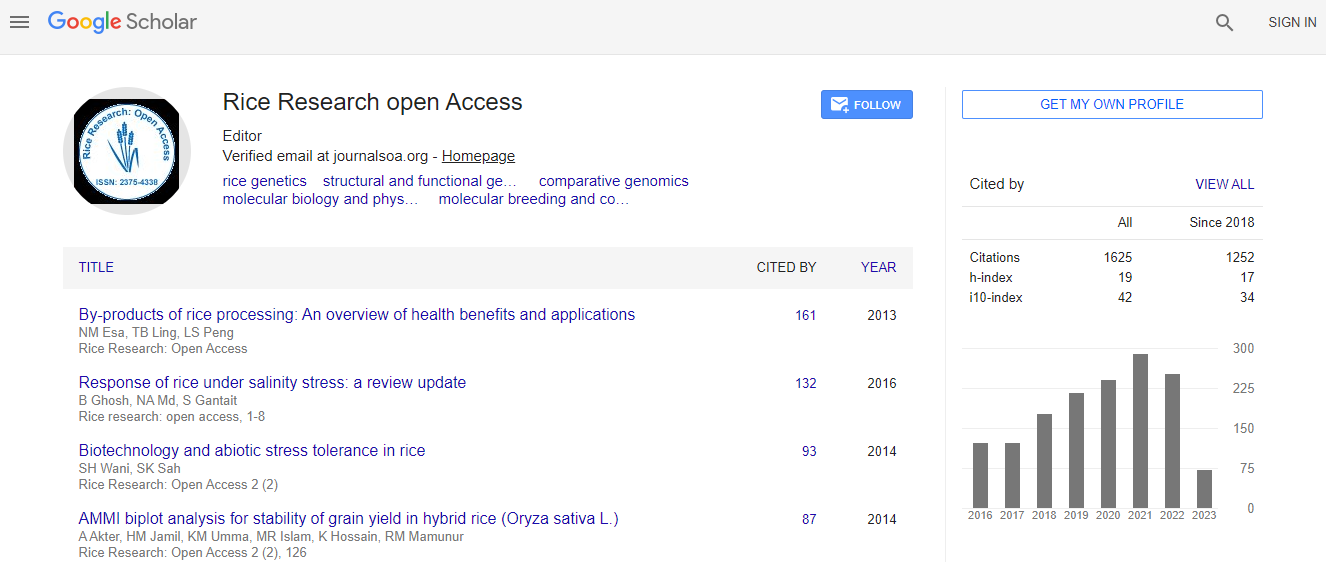Research Article
Stability Analysis of Rice Root QTL-NILs and Pyramids for Root Morphology and Grain Yield
| Grace Sharon Arul Selvi1, Farhad Kahani2 and Shailaja Hittalmani3* | |
| 1Department of Genetics and Plant Breeding, University of Agricultural Sciences, Bangalore-65, India | |
| 2Marker Assisted Selection Laboratory, Genetics and Plant Breeding, University of Agricultural Sciences, GKVK, Bangalore 560065, India | |
| 3University Head, Genetics and Plant Breeding, University of Agricultural Sciences, GKVK, Bangalore-560065, India | |
| Corresponding Author : | Shailaja Hittalmani Professor and University Head Genetics and Plant Breeding University of Agricultural Sciences GKVK, Bangalore 560065, India Tel: 91-8023624967 E-mail: shailajah_maslab@rediffmail.com |
| Received October 02, 2015; Accepted October 26, 2015; Published October 31, 2015 | |
| Citation: Selvi GSA, Kahani F, Hittalmani S (2015) Stability Analysis of Rice Root QTL-NILs and Pyramids for Root Morphology and Grain Yield. J Rice Res 3:153. doi:10.4172/2375-4338.1000153 | |
| Copyright: © 2015 Selvi GSA, et al. This is an open-access article distributed under the terms of the Creative Commons Attribution License, which permits unrestricted use, distribution, and reproduction in any medium, provided the original author and source are credited. | |
| Related article at Pubmed, Scholar Google | |
Abstract
Cultivation of rice in the rain fed conditions is threatened by frequent spells of water deficits and limits the productivity to a greater extent. Root system plays a major role in uptake of water and they contribute to drought tolerance in a major way. In this study, Root QTL were pyramided and evaluated under aerobic and drought conditions and the stable genotypes were identified. Two QTL and three QTL pyramid lines for roots were developed and evaluated under drought, aerobic and in different locations to study the performance. While qRT26-9 with 2 QTL pyramid performed better with respect to the root traits, qRT16-1+7 and qRT17-1+7 performed better for shoot morphology over the various growth water regimes. Among the pyramids, qRT11-7 × qRT18-1+7-17 recorded increased performance for plant height and seed yield while qRT11-7 × qRT18-1+7-32 recorded increased performance for total biomass and maximum root length. qRT24-9 × qRT11-7-32 recorded increased performance for root traits only across environments. Lines with high means and average stability were identified as suitable across growth niches, while those with low stability and high means were identified as suitable for growth under poor environments and for specific locations.

 Spanish
Spanish  Chinese
Chinese  Russian
Russian  German
German  French
French  Japanese
Japanese  Portuguese
Portuguese  Hindi
Hindi 
